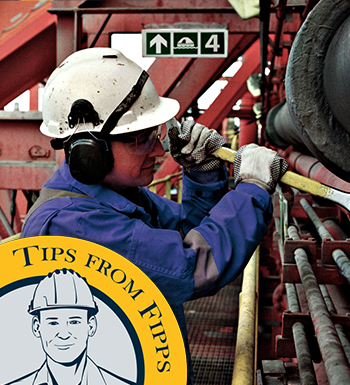Tips From Fipps: Encouraging Safe Work Practices

It's important to note that workplace safety is not just about meeting compliance but approaching safety comprehensively. This ensures employees consistently follow safety procedures and is crucial for maintaining a secure work environment. Here are some of the reasons workers ignore those protocols:
 Lack of Awareness: Employees must be fully informed about safety rules and procedures regularly. If too much time elapses between training and the need to use the rules, employees can quickly forget crucial details. Employees may also not be fully informed about specific safety rules or procedures despite regular training. Even if they are aware of the rules, they may not understand why they are important and consequential. This gap can be bridged through clear explanations and contextual information, and memorable examples.
Lack of Awareness: Employees must be fully informed about safety rules and procedures regularly. If too much time elapses between training and the need to use the rules, employees can quickly forget crucial details. Employees may also not be fully informed about specific safety rules or procedures despite regular training. Even if they are aware of the rules, they may not understand why they are important and consequential. This gap can be bridged through clear explanations and contextual information, and memorable examples. - Comfort and Convenience: Employees may prioritize their own comfort or succumb to time pressure in a fast-paced work environment, leading them to disregard safety protocols and potentially skip wearing personal protective equipment.
- Peer Influence: People tend to observe and mimic the behavior of their colleagues; if they witness others ignoring safety rules without consequences, they may feel inclined to do the same, especially in the context of group dynamics where social norms and peer pressure come into play. Employees may be hesitant to speak up if everyone else is violating safety guidelines.
- Leadership and Organizational Factors: If safety is not identified and encouraged as part of everyday culture, employees will become lax in their work practices. A strong safety culture within an organization fosters adherence to rules, while ineffective safety leadership can lead to negligence. It is difficult to convince employees of the importance of safety rules if leadership is not setting a good example.
TIP: organizations should focus on building a culture of commitment to safety> Enhance communication channels and ensure that leaders actively champion safety measures. Here are some effective strategies to create a safety-first culture and encourage compliance:
- Communication is Key
A strong training program should be your starting point for gaining employee buy-in. Training is specifically required in many OSHA standards, but that's just one reason to do it. Policies should be written in a clear and concise manner, and should be communicated to employees in a way that is easy to understand. Visual communication tools should be employed to consistently reinforce that training. - Make Safety Part of Your Organization’s Culture
From the moment candidates walk in for interviews, emphasize that safety is a core value. Incorporate safety reminders and training throughout the hiring and onboarding processes. Continuously reinforce safety during workdays. Present daily safety topics and guided stretching exercises at the beginning of each shift. Encourage employees to participate in safety programs and provide feedback on safety policies. This can help to create a culture of safety within the workplace
- Lead by Example
Leadership teams play a critical role in ensuring that safety policies are followed. They should be trained to recognize unsafe behavior and to take corrective action when necessary. More importantly, supervisors should set positive examples by adhering to safety policies. Consistent feedback, including behavior-based safety observations, reinforces the importance of safety.
- Acknowledge Contributions
Remind employees that their efforts make a difference. Regularly express gratitude for their commitment to safety. Address safety concerns as learning opportunities rather than being overly accusatory. Combining safety monitoring with a supportive environment increases employee participation in safety procedures.
- Empower Employees
Encourage them to take ownership of safety processes. When employees feel invested, they are more likely to follow procedures. Organizations should want to know what's going on in their work environment that may cause harm to their employees. But employees may not be speaking up about issues they see around the workplace for fear of retaliation or because they don’t think their workplace will address them. It's important to create an environment where employees feel safe and secure enough to do their jobs, because protected employees are also highly engaged employees.
DuraLabel Resources
Remember, consistent communication, training, and a positive safety culture contribute significantly to employee compliance with safety protocols. DuraLabel's free OSHA Safety Signs Instant Action Guide helps create OSHA and ANSI-compliant safety signs as well as quickly assess facility needs through an easy to use site inspection checklist. Download
Learn more about 5s. DuraLabel's free 5s Instant Action Guide helps create a plan and set standards that workers can use to optimize safety in their workplace.
Read Next:
Safety You Can See, Successful Construction Communication
Related Resources

Electrical Conduit Labels: Why the Right Markings Make A Difference
Clearly labeled electrical conduit enhances workplace safety, boosts efficiency, and prevents costly mix-ups ...
Read
The Key to Reliable Construction Projects: Safety Signage That Works
Construction signs and labels play a crucial role in protecting workers and keeping projects on schedule. ...
Read
How to Improve Facility Safety with Compliance Labeling
Before beginning work, it's crucial to evaluate your facility for safety hazards. Consistent and effective ...
Read.png)





